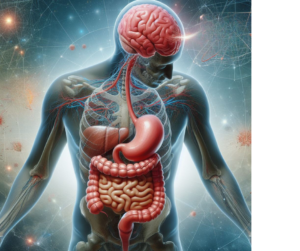The gut is an essential part of our overall health, and various stomach and gut health issues can significantly disrupt digestion. These problems can lead to chronic pain and discomfort, ultimately impacting one’s quality of life. Common conditions include irritable bowel syndrome (IBS), gastroesophageal reflux disease (GERD), peptic ulcers, inflammatory bowel disease (IBD), coeliac disease, diverticulitis, and gallstones.
Table of Contents
ToggleUnderstanding Irritable Bowel Syndrome and Its Impacts
Irritable bowel syndrome (IBS) is a chronic disorder that significantly affects gut health, leading to uncomfortable symptoms such as stomach pain, bloating, diarrhea, and constipation. The exact causes of IBS can vary among individuals and may include factors such as genetic predisposition, dietary choices, previous gut infections, inflammation of the gut lining, and an imbalance of gut bacteria. Understanding the triggers and symptoms is vital for effective management and improving overall quality of life.
Exploring Gastroesophageal Reflux Disease: Causes and Effects
Gastroesophageal reflux disease (GERD) is a chronic condition characterized by the regular backflow of stomach acid into the esophagus. This acid reflux can lead to symptoms such as persistent heartburn, regurgitation, and chest pain. If left unaddressed, GERD can result in serious complications, including Barrett’s esophagus, a condition that increases the risk of esophageal cancer. The underlying cause of GERD often relates to a weakened sphincter muscle at the junction of the stomach and esophagus, which can be exacerbated by factors like obesity, smoking, certain dietary choices, and specific medications.
A thorough understanding of GERD can aid in the development of effective treatment strategies to mitigate symptoms and enhance quality of life.
A weak sphincter muscle can allow digestive acids to escape the stomach, traveling back into the esophagus. Additional factors contributing to GERD include improper stomach emptying, hiatus hernia, excess weight, and lifestyle choices such as smoking and a diet high in citrus, spicy, or fatty foods.
Understanding Peptic Ulcers: Symptoms and Causes
Peptic ulcers are painful sores that form in the lining of the stomach, esophagus, or small intestine. Symptoms often include significant abdominal pain, bloating, nausea, vomiting, and unintended weight loss. The primary causes of these ulcers can include an overgrowth of Helicobacter pylori, long-term use of nonsteroidal anti-inflammatory drugs (NSAIDs), excessive stomach acid production, and damage to the protective mucus layer that shields the digestive tract. Additionally, lifestyle factors such as smoking and heavy alcohol consumption can exacerbate ulcer formation.
Inflammatory Bowel Disease: An Overview of Symptoms and Risks
Inflammatory bowel disease (IBD) is a term encompassing chronic inflammation of the digestive tract, most commonly seen in conditions such as Crohn’s disease and ulcerative colitis. Individuals with IBD may experience symptoms including frequent abdominal pain, diarrhea, unexplained weight loss, and debilitating fatigue. This condition often has a genetic component and is frequently associated with other autoimmune diseases. Unfortunately, there is no known cure, and individuals with IBD may face an increased risk of developing bowel cancer. Like IBS, IBD significantly impacts quality of life and daily functioning. Chronic inflammation can damage the gut lining, leading to a decrease in the protective mucus layer and creating gaps between the intestinal cells. This condition, known as increased intestinal permeability or “leaky gut,” allows harmful substances to enter the bloodstream, causing further inflammation and pain in the body.
Coeliac Disease: Recognizing Symptoms and Causes
Coeliac disease is an autoimmune condition that occurs when the body reacts adversely to gluten, a protein found in grains such as wheat, rye, and barley. This reaction can severely damage the intestinal lining, leading to malabsorption of nutrients and a range of digestive issues, including foul-smelling diarrhea, bloating, gas, indigestion, and constipation, all of which can contribute to significant abdominal discomfort.
Individuals with a family history of coeliac disease or other autoimmune conditions are at a higher risk of developing this disease. Understanding the condition is vital for effective management and to prevent complications associated with nutrient deficiencies.
Understanding Diverticulitis: Symptoms and Causes
Diverticulitis occurs when small pockets develop in the lining of the large intestine, leading to inflammation and infection. Food particles can become trapped in these pockets, resulting in digestive issues such as bloating and lower abdominal pain. Severe symptoms may include intense stomach pain, fever, and chronic diarrhea, which necessitate immediate medical attention. The primary risk factors for diverticulitis include a diet low in fiber, obesity, sedentary lifestyle, and smoking habits.
Gallstones: Understanding Symptoms and Risk Factors
Gallstones, while not located in the stomach or intestines, can cause severe upper abdominal pain. They are formed from hardened cholesterol, bile, and bilirubin, and can vary in size from tiny grains to larger stones. Symptoms may include nausea and vomiting. Risk factors for developing gallstones include being over 40, female, obesity, diabetes, and a family history of gallstones. Additionally, a diet low in fiber and high in processed foods can increase the likelihood of gallstone formation.
Effective Strategies for Preventing Gut and Stomach Problems

The digestive system is often referred to as the “second brain” due to its intricate network of nerves, known as the enteric nervous system. In fact, the gut contains more neurons than the spinal cord, including the vagus nerve, which forms a critical connection between the gut and the brain. Interestingly, more signals travel from the gut to the brain than vice versa, a phenomenon known as the gut-brain axis. This connection can influence emotional states, leading to physical sensations we often describe as ‘gut feelings’.
The concept of the
Post navigation
Previous Post
 Happiness vs Pleasure: Cherishing Meaningful Moments
Happiness vs Pleasure: Cherishing Meaningful Moments